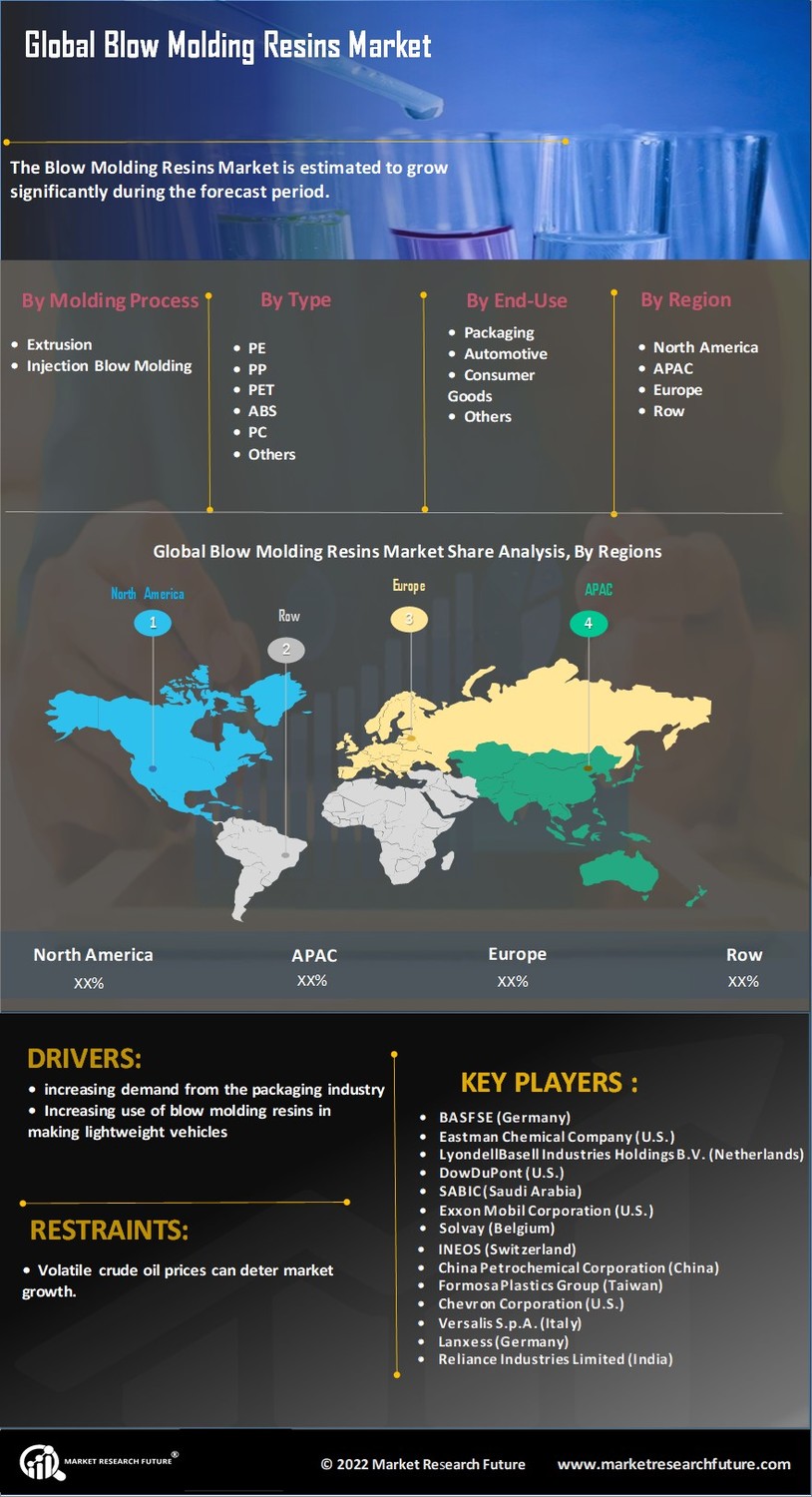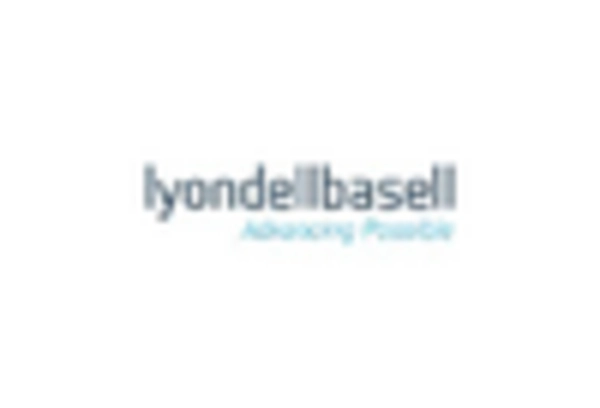Leading market players are investing heavily in research and development to expand their product lines, which will help the Blow Molding Resins Market grow even more. Market participants are also undertaking various strategic activities to expand their footprint, with important market developments including new product launches, contractual agreements, mergers and acquisitions, higher investments, and collaboration with other organizations. To expand and survive in a more competitive and rising market climate, the Blow Molding Resins industry must offer cost-effective items.
Manufacturing locally to minimize operational costs is one of the key business tactics manufacturers use in the Blow Molding Resins industry to benefit clients and increase the market sector. The Blow Molding Resins industry has offered some significant advantages in recent years. Major players in the Blow Molding Resins Market, including BASF SE (Germany), Eastman Chemical Company (U.S.), LyondellBasell Industries Holdings B.V. (Netherlands), DowDuPont (U.S.), SABIC (Saudi Arabia), Exxon Mobil Corporation (U.S.), Solvay (Belgium), INEOS (Switzerland), China Petrochemical Corporation (China), Formosa Plastics Group (Taiwan), Chevron Corporation (U.S.), Versalis S.p.A. (Italy), Lanxess (Germany), Reliance Industries.
Limited (India), LG Chem (South Korea)., and others are attempting to increase market demand by investing in research and development operations.
Exxon Mobil Corporation is an American multinational corporation in the oil and gas industry. ExxonMobil has launched a new grade of high-density polyethylene (HDPE) called PaxonTM HDPE SP5504. This innovative product greatly enhances the characteristics typically found in unimodal HDPE resins. PaxonTM SP5504 boasts exceptional performance, making it a superior substitute for unimodal HDPE due to its improved property balance.SABIC further expanded its engineering plastics product portfolio by launching new chemically resistant LNP CRX polycarbonate copolymer resins, as shown in August 2022.
SABIC has broadened its engineering plastics range with four novel grades of chemically resistant LNP CRX polycarbonate copolymer resins. To escalate their resistance to chemicals such that they can be applied within various domains, including the automotive industry, electronics industry healthcare industry, amongst other things
IntraPac is a custom packaging company that offers a variety of solutions for the personal care, pharmaceutical, and food and beverage industries. Recently, US-based rigid packaging solutions manufacturer IntraPac International completed its merger with Technical Precision Plastics. IntraPac is known for creating unique packaging solutions, including coating services for adhesives, jars, vials, caps, nozzles, bottles, tubes, and MDI drums.
This merger aims to combine their operations and provide top-notch design, production, and supply chain capabilities while delivering excellent service to major medical and consumer industries.BASF SE inaugurated manufacturing facilities for engineering plastics at the Zhanjiang Verbund site in South China’s Guangdong Province with an annual capacity of 60kt in July 2022. Global leader BASF SE inaugurated a special plant producing construction plastics on Wednesday on-site of Zhanjiang Verbund, located within South China’s Guangdong province.


















Leave a Comment